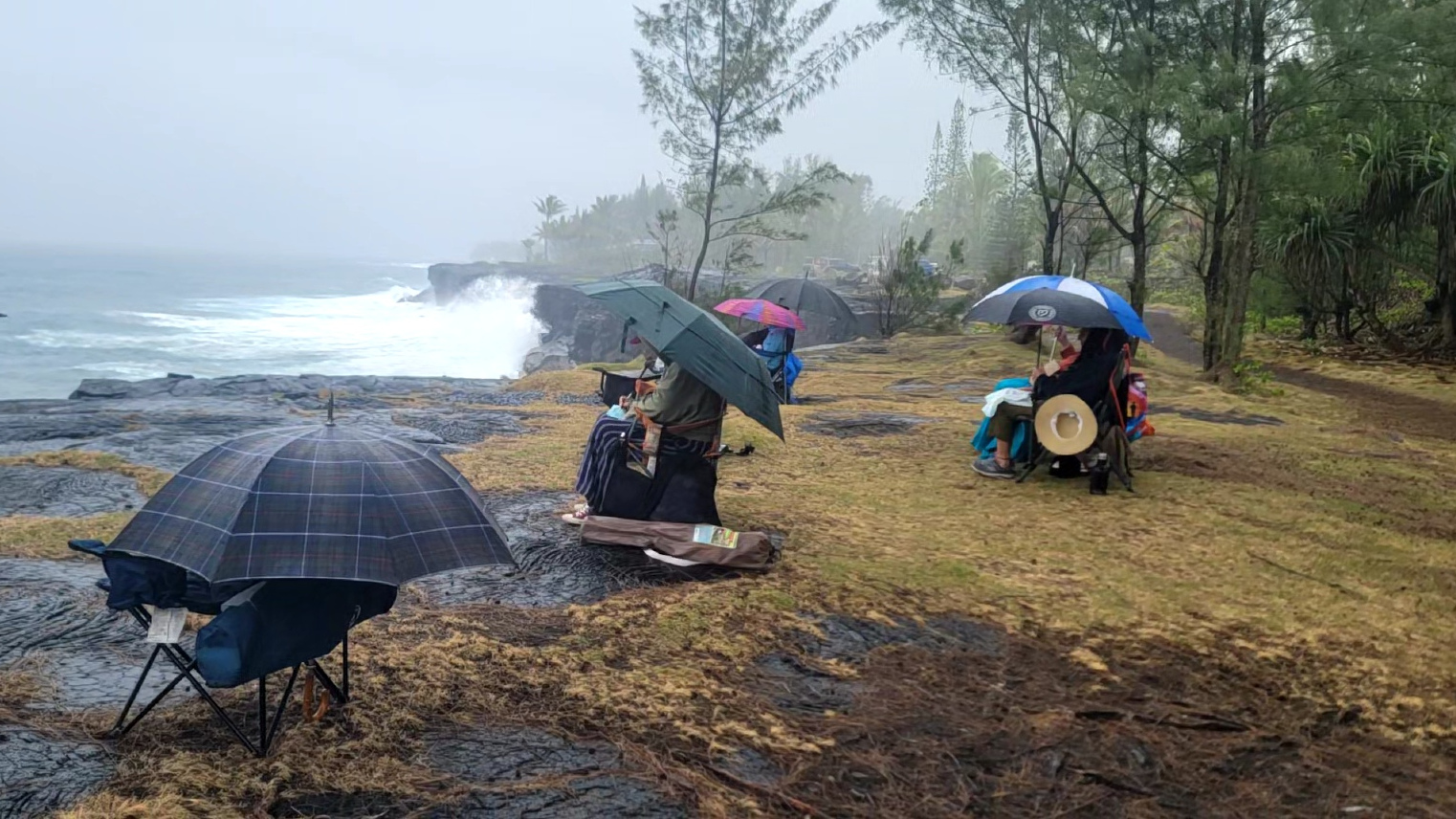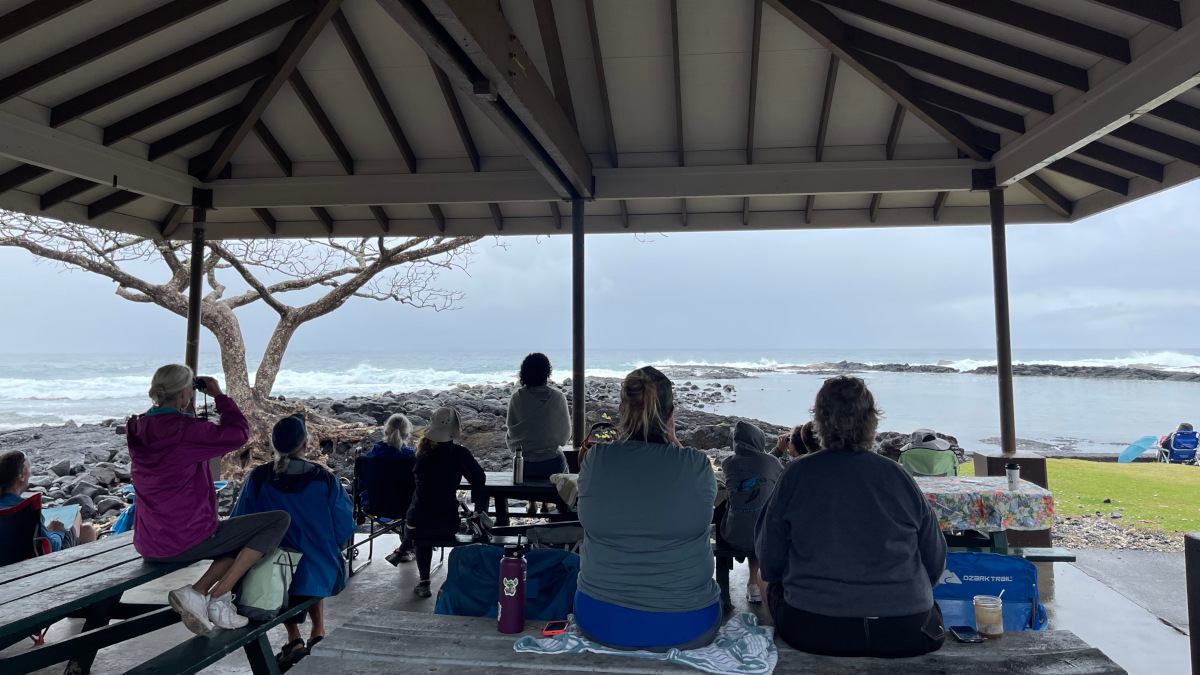(BIVN) – The second Humpback Whale count of the season was held on Saturday.
From a news release by event organizers:
463 volunteers gathered data from the shores of Kaua‘i, O‘ahu, Molokaʻi and Hawai‘i islands during the Hawaiian Islands Humpback Whale National Marine Sanctuary Ocean Count and from Maui and Lānaʻi during the Great Whale Count by Pacific Whale Foundation, the second of three coordinated whale counts between the two organizations in 2024.
This is the sixth year that both counts are coordinated on the same days, ensuring the data from all the main Hawaiian Islands are collected simultaneously.
Volunteers collected data from 45 sites across all the main Hawaiian Islands on February 24. A total of 289 whales were observed during the 9:30 – 9:45 am time period, the most of any time period throughout the day’s count.
On Kaua‘i, the total number of whales observed during the day’s count was 239, on O‘ahu, the total was 363, on Molokaʻi, the total was 86 and Hawai‘i 466. The total number for the Great Whale Count on Maui was 948, and on Lānaʻi was 39, for a grand total of 2141 throughout the main Hawaiian Islands. This number may represent duplicate sightings of the same whale by different observers or at different time periods or different locations throughout the day.
Data collected during the Sanctuary Ocean Count and Great Whale Count combined with other research efforts can help reveal trends in humpback whale occurrence within and amongst whale seasons.
Across the main Hawaiian Islands, weather conditions were not ideal for viewing whales with poor visibility across many sites due to rain, high surf and windy conditions. Some sites had to end the count early due to the poor weather conditions. Despite the weather, koholā and a variety of other species were still spotted during the count including honu (green sea turtles), ʻilioholoikauaua (Hawaiian monk seals), naiʻa (spinner dolphins), Hāhālua (manta ray) and multiple bird species such as ʻiwa (great frigatebird), mōlī (Laysan albatross), Nēnē (Hawaiian goose), ʻā (brown booby) and more.
Ocean Count promotes public awareness about humpback whales, Hawaiian Islands Humpback Whale National Marine Sanctuary, and shore-based whale watching opportunities. Site leaders tally humpback whale sightings and document the animals’ surface behavior during the survey, which provides a snapshot of humpback whales’ activity from the shorelines of Kaua‘i, Oʻahu, Molokaʻi and Hawai‘i islands. Ocean Count is supported by the National Marine Sanctuary Foundation.
The Great Whale Count by Pacific Whale Foundation had site leaders count whales from shore as part of a long-term survey of humpback whales in Hawai’i, with 12 survey sites along the shoreline of Maui and a new site on the shoreline of Lānaʻi. This event provides a snapshot of trends in relative abundance of whales and is one of the world’s longest-running community science projects.
Both counts take place three times during peak whale season annually on the last Saturday in January, February, and March.
Preliminary data detailing Sanctuary Ocean Count whale sightings by site location are available at: oceancount.org/resources/. Additional information is available on the sanctuary’s website at hawaiihumpbackwhale.noaa.gov.
Pacific Whale Foundation’s Great Whale Count data may be found at pacificwhale.org/ …
Hawaiian Islands Humpback Whale National Marine Sanctuary, administered by NOAA’s Office of National Marine Sanctuaries and the State of Hawai‘i Division of Aquatic Resources, protects humpback whales and their habitat in Hawaiian waters where they migrate each winter to mate, calve, and nurse their young.
With a mission to protect the ocean through science and advocacy, and to inspire environmental stewardship, Pacific Whale Foundation (PWF) conducts Research, Education and Conservation programs for the communities in which it serves. Founded by Greg Kaufman in 1980 as a 501(c)(3) nonprofit organization dedicated to saving the world’s whales from extinction, PWF now operates a social enterprise that offers fee-based programs and services through PacWhale Eco-Adventures to help fund its nonprofit work. Combined with memberships, donations, charitable grants and a remarkable group of dedicated volunteers, PWF now reaches more than 400,000 individuals each year through its Maui and Australia offices and research projects in Ecuador and Chile.
The National Marine Sanctuary Foundation, established in 2000, is the official non-profit partner of the National Marine Sanctuary System. The Foundation directly supports national marine sanctuaries by protecting species, conserving ecosystems and preserving America’s maritime heritage through on-the-water conservation projects, public education and outreach programs and scientific research and exploration.



by Big Island Video News6:34 am
on at
STORY SUMMARY
ISLAND OF HAWAIʻI - The Sanctuary Ocean Count and Great Whale Count volunteers observed whales from Kaua‘i, O‘ahu, Molokaʻi, Hawai‘i, Lānaʻi and Maui.